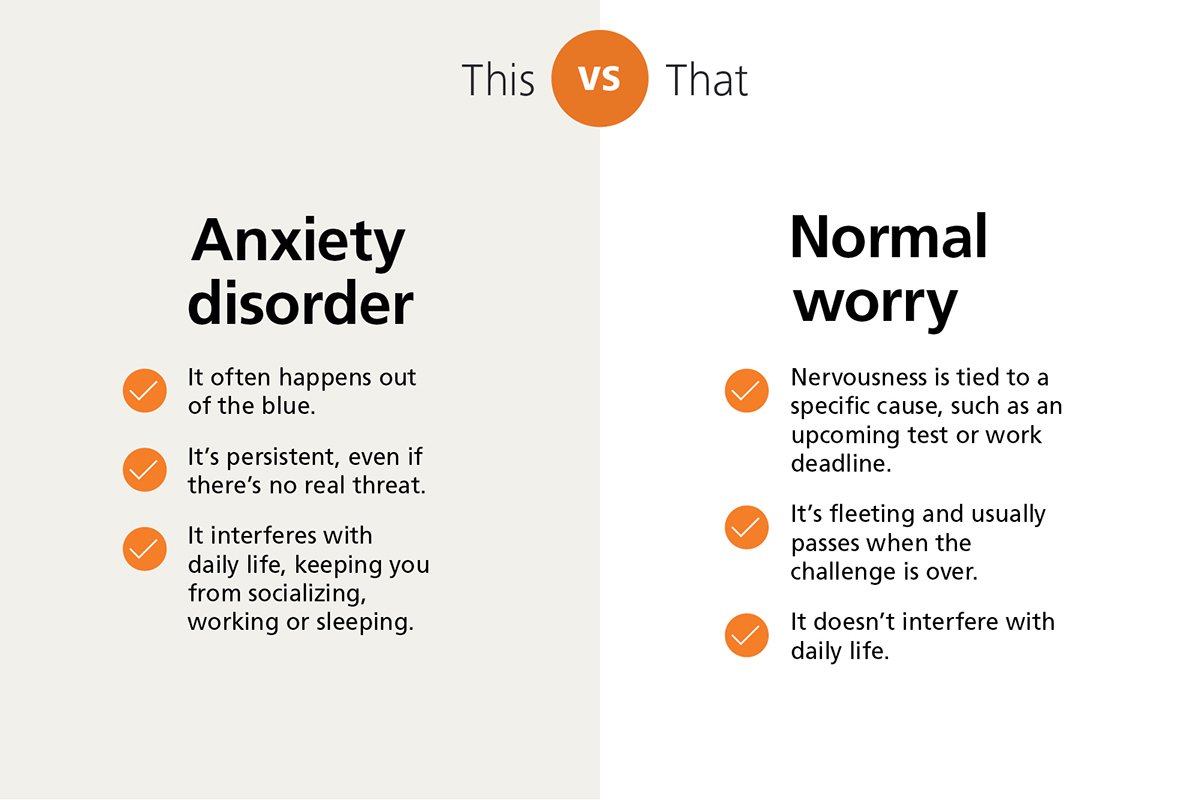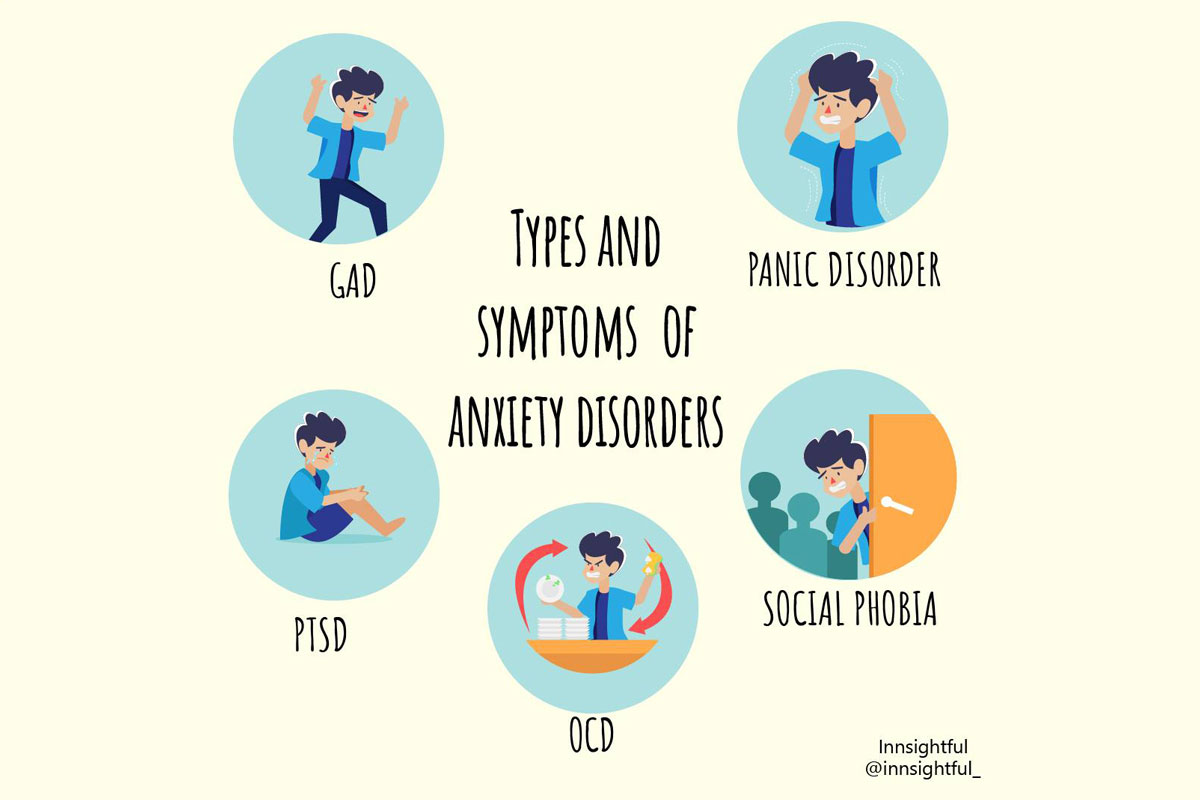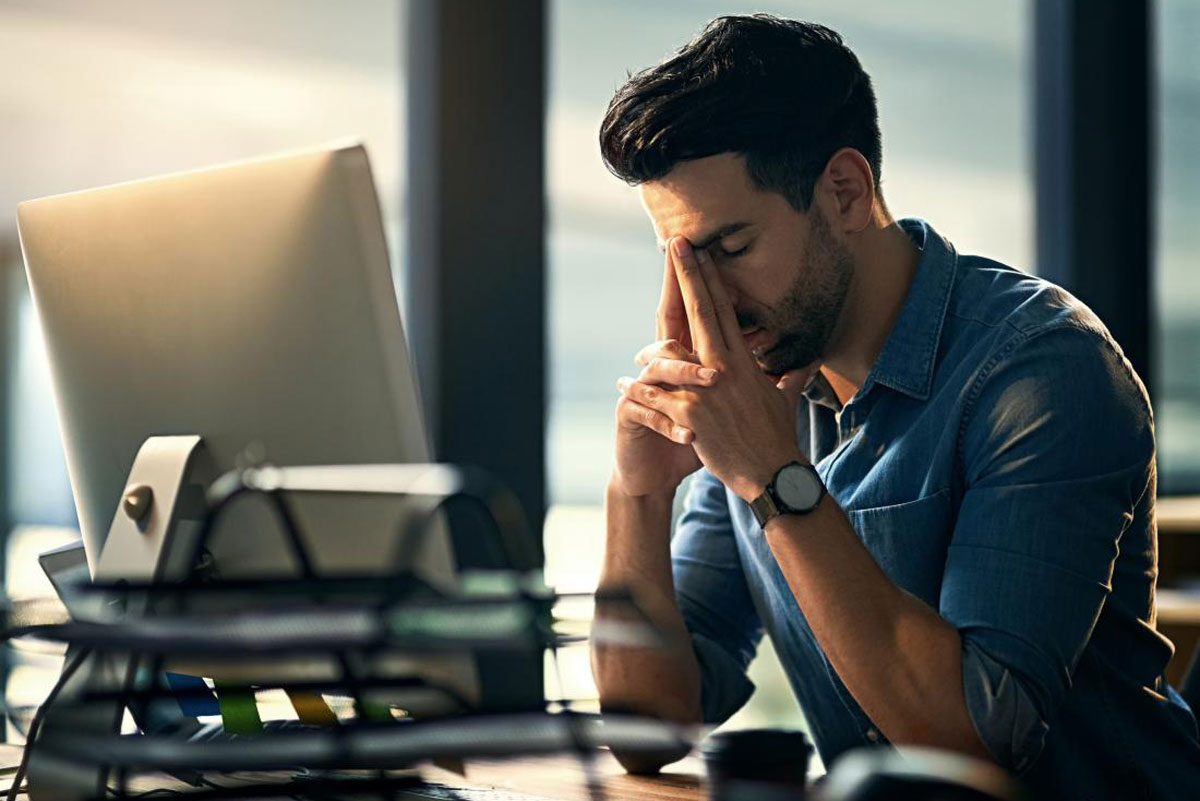Anxiety is one of the most common health conditions experienced by men in Australia. In fact, according to mental health charity Beyond Blue, 1 in 5 men will experience anxiety at some point in their life. This probability makes anxiety more common than depression, which is experienced by 1 in 8 men in Australia.
But, because some symptoms of anxiety can be mistaken for everyday, or regular occurrences, many men are unaware their conditions could actually be cause for concern. So, what is anxiety, what are the symptoms, what are the causes and most importantly, what help is there for men?
Read on to find out.
What is anxiety?
Anxiety is an emotion that one usually experiences in response to the anticipation of an event. It brings with it feelings of uneasiness, turmoil and worry, which result in a change in physical and physiological behaviour.
Anxiety vs worry

Anxiety and worry are interrelated, but ultimately are two separate emotional responses to a situation. They can often get confused with one another but there are easy ways to separate the two. The easiest way to differentiate the two is to remember that feelings of worry often remain in the mind and are in response to a genuine threat.
With anxiety, it can often show itself in physical changes in your body. This doesn’t just mean you get sweaty palms, but you may hyperventilate or feel lightheaded. People who suffer from anxiety may also suffer from indigestion or nausea. Someone suffering from anxiety may also find it difficult to determine what it is that is causing the emotional and physical response. This can, in-turn, make someone more anxious, because they can’t understand what’s making them feel anxious in the first place.
Different types of anxiety men experience
Anxiety can occur in many different forms, and there is actually a difference between someone with anxiety and someone with an anxiety disorder.
Anxiety vs anxiety disorder
Anxiety is what you feel in reaction to a certain event or situation and, for the most part, doesn’t provide much cause for concern. This ‘normal anxiety’ will only last for as long as the event or situation and in most cases, should be expected.
An anxiety disorder, meanwhile, is a mental health issue that is diagnosed with if their feelings of anxiety either come on without being provoked, are much stronger in their effect on oneself than would be expected, or the feelings of anxiety last much longer than the event itself.

There are 5 identified major types of anxiety disorder that men can experience, they are:
- Generalised Anxiety Disorder (GAD): Men who suffer from GAD will feel intense feelings of worry on a constant basis, and not just in response to a particular event like preparing for an exam or a job interview, for example.
These feelings of worry will be so strong that they will interfere with a man’s everyday life and can lead to feelings of anxiety over what would be considered minor events, such as performing household chores. You may have GAD if you feel worried about various events, and subsequently found it hard to stop worrying about them, for 6 months or more.
Further symptoms of GAD include having trouble sleeping, feeling irritable, getting tired easily or experiencing muscle tension. - Social Anxiety Disorder (SAD): SAD can also be known as social phobia, and refers to when someone experiences intense anxiety when faced with social situations, such as networking or public speaking. These feelings of anxiety are brought on in response to fearing being judged, criticised, laughed at or humiliated. SAD can also be experienced in more everyday settings, such as eating in front of someone else.
Symptoms of SAD can include feeling nervous or embarrassed in social situations, such as meeting new people, being observed or performing in front of others. If you then find you want to avoid these social situations because of the feelings of nervousness or embarrassment, then you may have social anxiety disorder. - Panic Disorder: Panic disorder is what someone who experiences regular and severe panic attacks would be diagnosed as suffering from. Panic attacks need to occur out of the blue and on a regular basis, and cause you to feel worried for extended periods of time following a sudden panic attack, that you are going to have another.
RELATED: Australian Weatherman’s On-Air Panic Attack Shows Men Suffering From Anxiety Are Not Alone
While panic attacks can be incredibly common for people to experience, people with a panic disorder will experience them suddenly and will experience several symptoms in one hit. Beyond Blue outlines the most common symptoms someone with a panic disorder may experience.
If you experience four or more of the symptoms during a panic attack episode and then feel constantly worried for at least a month following your panic attack, you may have a panic disorder.
- Post Traumatic Stress Disorder (PTSD): PTSD occurs following an especially traumatic event in one’s life, such as a serious accident, physical or sexual assault, war, torture or natural disasters. PTSD doesn’t have to occur immediately following the traumatic event, it can come on years later.
Symptoms of PTSD can include re-living the traumatic event, which results in emotional and/or physical reactions, or deliberately avoiding anything associated with the traumatic event, such as people involved, places or activities. - Obsessive Compulsive Disorder (OCD): OCD is a well-known disorder that is identified by someone having constant intrusive thoughts relating to the need to perform certain routines. The main symptoms of OCD are obsessions and compulsions (hence its name). Obsessions are defined are constant unwanted thoughts or urges that result in one feeling anxious, disgust or discomfort, such as fear of contamination.
Compulsions are defined as being the repeated actions or routines in response to the obsessions. Someone who fears contamination will feel they need to wash their hands on a constant basis, or to wash them a certain way every single time.
OCD becomes a problem when the compulsions affect one’s everyday life, even though they’re performed to alleviate the discomfort brought on by the obsession.
Symptoms of anxiety
Someone experiencing anxiety should be able to determine that the responses they’re having are more severe compared to simply worrying about something. If, however, the feelings of worry are ongoing and affect your ability to go about daily tasks or to work, then there is a good chance you are experiencing anxiety.
According to the Better Health Channel, the most common symptoms of anxiety include:
- Racing heartbeat
- Excessive sweating
- Muscle tension
- Dizziness
- Shortness of breath
- Insomnia
- Panic attacks
- Feelings of dread
- Avoidance
- Catastrophic thinking
- Absentmindedness
- Fear of losing control
RELATED: Signs You Have High Functioning Anxiety – & How To Cope With It
Treatment for anxiety in men
The good news is that anxiety is treatable by way of therapy, medication or lifestyle changes. In some instances, a combination of some or all of the treatment options may be required.
Therapy
Different types of therapy will be recommended depending on the type of anxiety a man experiences. However, psychotherapy, cognitive behavioural therapy (CBT) and exposure therapy are the most common and have been deemed to be the most effective in treating anxiety in men.
Medication
Only a doctor can prescribe medication to help treat male anxiety, with antidepressants, benzodiazepines and buspirone being the most common medications used. However, testosterone replacement therapy (TRT) has been shown to help treat anxiety in men too.
TRT will only be carried out if it’s determined that the cause of a man’s anxiety is a result of low testosterone levels. If low testosterone is the cause of a man’s anxiety, then only TRT can help. Prescribing antidepressants or benzodiazepines won’t help to cure the problem.
Lifestyle Changes
Some men experiencing anxiety may find making some lifestyle changes can help to cure their symptoms. Introducing practices such as meditation, yoga and breathing exercises, or even a healthier diet, have all shown to make a positive impact on men who experience anxiety.
RELATED: Master Trainer Reveals Most Effective Exercises For Reducing Anxiety
Resources for men with anxiety
- Beyond Blue is one of Australia’s leading mental health charities. It provides information, advice and support to anyone experiencing anxiety and/or depression, and anyone thinking about suicide.
- MensLine Australia: MensLine Australia is a telephone and online support service that offers men a safe and private place to talk about any concerns they have. Staff and counsellors are trained to deal with a variety of men’s mental health conditions.
- Lifeline: Lifeline is a national charity that offers 24-hour support for all Australians experiencing emotional distress. Support is available via telephone, online or text, with all staff trained to listen and not pass judgement.
If you or someone you know needs urgent emergency attention, then call 000.
